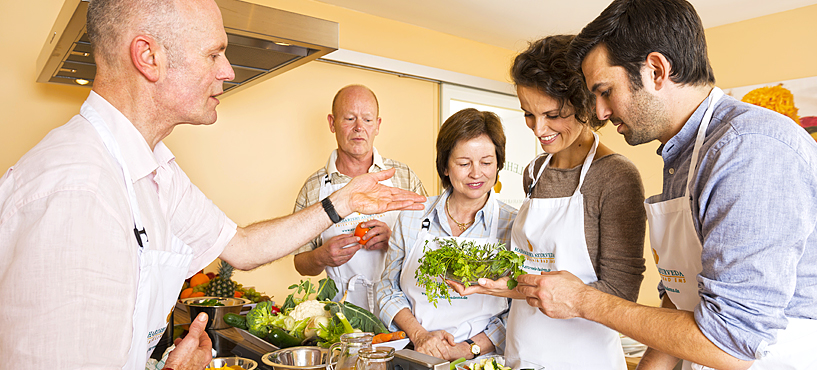Ayurvedic cooking Exactly to your taste
Discover the seductive flavors of Ayurvedic cuisine – exactly to your taste and individual needs. Ayurvedic cuisine is always fresh, full of crunchy vegetables, juicy fruits, exotic spices and delicate herbs. A delight for body and soul.
Just give it a try. Enjoy the fine buttery scent of melted ghee in which you roast fresh spices. Cook, fry or steam your favorite ingredients from everything that Ayurveda recommends for your Dosha type. Create your own personal “body” dish and feel how it nourishes you completely.
And remember: the most important ingredients are the mood of the cook and his love for food.
Cooking courses
What makes Ayurvedic cuisine so unique? How do all the delicious dishes succeed? What are the most important herbs and spices and their effects? How can I strengthen my health and well-being with the right menu?
We will tell you.
In our specially equipped teaching kitchen, you will prepare the most important Ayurvedic dishes together with the experienced Ayurvedic chef Jochen Lotz. You will make your own ghee and lassi, learn a basic recipe for dhal with delicious variations, cook delicious chutneys, vegetable and grain dishes. In the theory units you will learn, among other things, the 10 golden food rules of Ayurveda or how you can feel the effects of good food yourself by feeling your pulse.
Learn and above all experience with all your senses which food is good for us, can be completely metabolized and not only makes us full, but nourishes us completely.
And because a happy person is the best cook, there is of course no shortage of fun in all this learning.
